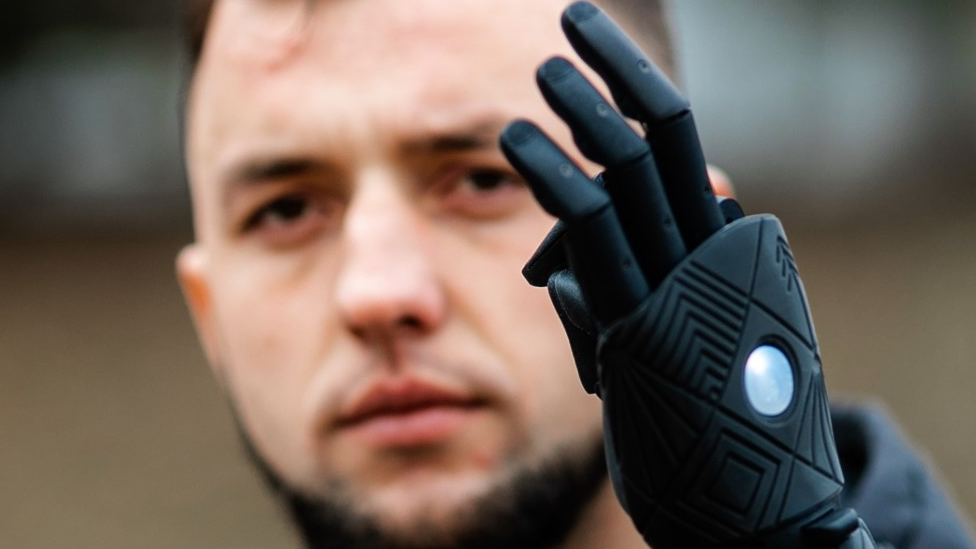Ukraine war: Training to clear the world's most heavily mined country
- Published

The Ukrainians are "very quick" to learn mine clearing techniques, says British Staff Sgt Kevin Engstrom
Specialist British military bomb disposal teams are training Ukrainian engineers to clear Russian minefields.
Ukraine is now the most heavily mined country in the world, and it's slowing down Ukrainian military advances. The training by British Army sappers - combat engineers, some of whom faced similar obstacles in Afghanistan - was specifically requested by Ukraine.
The BBC is the first news organisation to visit the military base in Poland where the training has been taking place.

Most of the Ukrainian engineers, like Denys, are already battle-hardened and experienced.
He volunteered to fight the day after Russia's full-scale invasion began in February 2022. This brief visit to Poland is the first time he's left Ukraine since 2021, the first time he's seen passenger jets flying overhead in nearly two years.
Denys calls Explosive Ordnance Disposal (EOD) the most dangerous job in the world. "We need more sappers," he says, "we don't have enough of them".
I ask him if he's lost friends doing this dangerous work. His eyes well with tears as he nods.
He says he appreciates the help being given by his British brothers in arms, but says Ukraine still needs more Western help and equipment to clear the Russian minefields. "We can't do it on our own," he says.
Denys says that even if the war ended tomorrow, it would still take hundreds of years to clear the mines that have now been laid.
Russia has been producing and laying mines on an industrial scale in Ukraine.
They're now scattered over an area the size of Florida; the minefields can be up to 10km (6.2 miles) deep. Just one square metre can contain as many as five explosives.
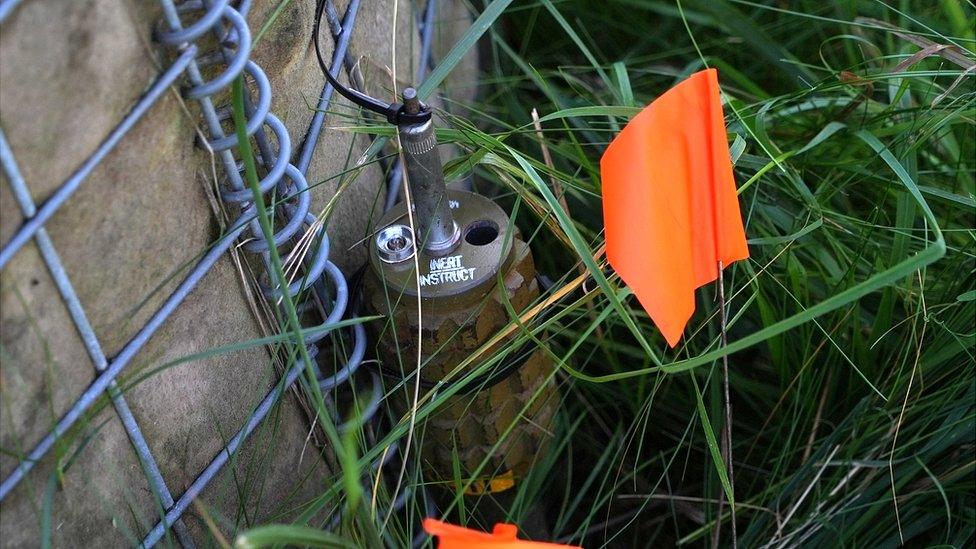
Ukrainian engineers are being shown how to safely clear anti-tank, anti-personnel, and bounding mines
At the military base in Poland, more than 20 dummy devices have been buried and booby-trapped by the small UK training team in a field. The British EOD experts, from 35 Engineer Regiment, are testing the Ukrainians' skills as the course nears its end.
Among the devices they've hidden are large cylindrical anti-tank mines; smaller anti-personnel ones; bounding mines - which pop out of the ground and spread shrapnel over a wide area - and grenades fitted to a trip wire.
Those not on display include the small butterfly mines designed to maim; others triggered by vibration rather than direct contact; and mines which can turn themselves on and off to avoid detection.
Russia has had decades to plan, produce and prepare these weapons - now one of the major causes of Ukrainian casualties and injuries.
Ihor, who has been a sapper for four years, says he has already lost more than 10 members of his team. He says one team of sappers may have to deal with more than 100 devices a day. They're also often having to clear areas still in range of Russian artillery and small arms fire.
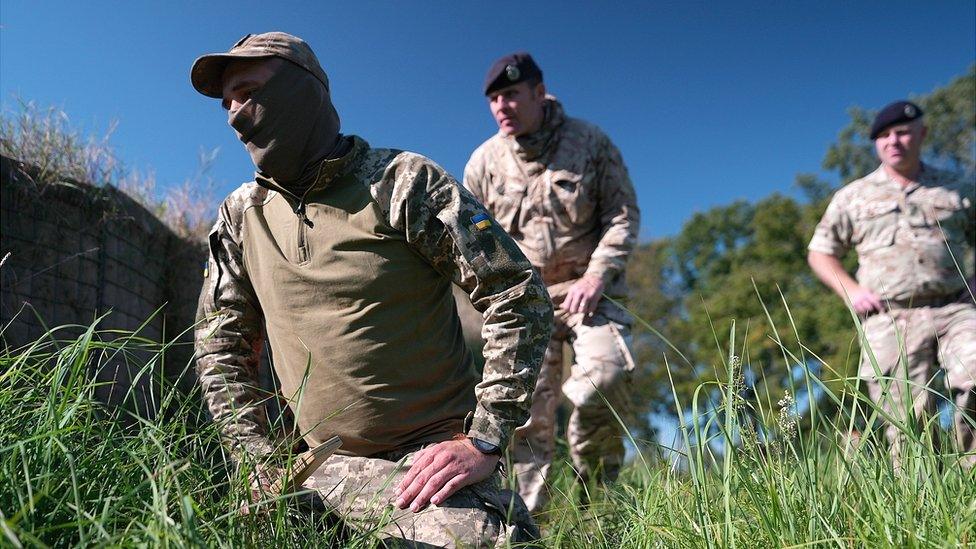
Staff Sgt Engstrom says the British are teaching the Ukrainians the gold standard of mine clearance
That's one of the reasons why they mostly work at night.
Ukrainian sappers are also being deliberately targeted by Russian forces to slow down their advance.
"When we advance, we have to take higher risks. We don't always have time to see if the mines are booby trapped," says Ihor.
Staff Sgt Kevin Engstrom says the British are teaching the Ukrainians the gold standard of mine clearance, which involves time and patience, but adds: "If your immediate threat is gunfire, you can't always be slow and methodical."
As in Afghanistan, the threat is also evolving.
Denys says it's now the norm to find the bodies of dead Russian soldiers booby-trapped in liberated territory. Russia has been placing anti-tank mines on top of each other to cause larger explosions.
Smaller anti-personnel mines are also being placed on top of vehicle mines to trigger the larger bomb. Trip wires are often hidden in the grass.
The Russians also now hang them from trees with hooks attached, to try to snag the uniforms and equipment of advancing troops.
Clearing a path through these deadly hidden traps can be slow and laborious. The Ukrainian sappers first use Vallons, which look like metal detectors, to clear a path.
Britain has already provided Ukraine with 1,500 of them. When the Vallon squawks the sappers get down on their knees and stomachs to identify the threat. It can be painstaking work by hand.
Denys admires the ants crawling on the ground before spotting a trip wire. "You guys make it hard," he laughs.
The British trainers all comment on the speed of the Ukrainians. "They're very quick. The first time I deployed to Afghanistan I was slow. They don't miss much," says Staff Sgt Engstrom. Their work is impressive with the kit they've been given, he adds.
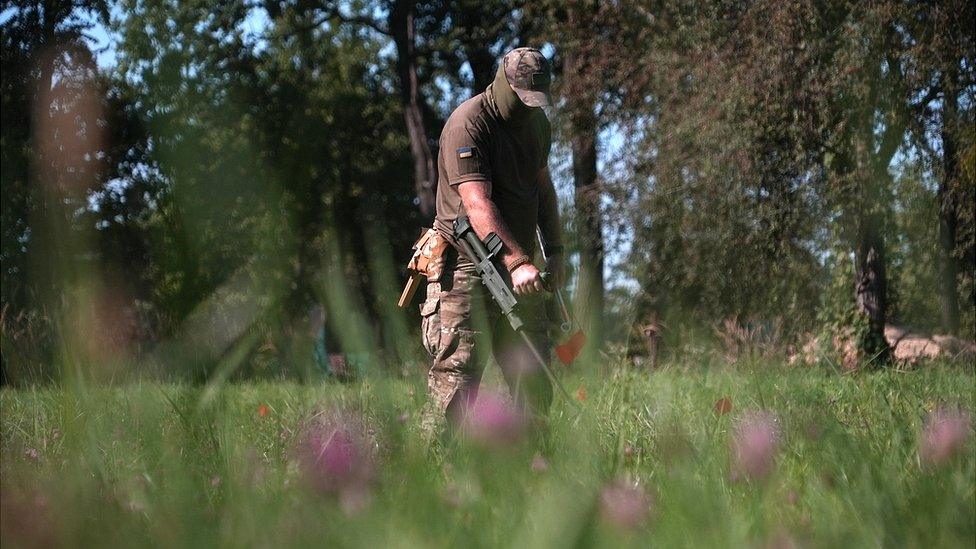
The UK has provided Ukraine with 1,500 Vallons, which are used to clear a path
Making the device safe is not the biggest challenge. Ihor says he was already familiar with the types of mines the Russians use before the invasion. "It's quite easy to disarm mines, but the Russians are making it more difficult".
The British instructors liken it to solving a puzzle or a game of chess.
The real challenge is trying to work out where the minefields are and why they have been placed there. It's often deliberate - to draw in troops who can then be targeted by artillery.
Mines are often booby trapped. Capt Chris Wilson, who leads the small British training team in Poland, says the character traits needed for Explosive Ordnance Disposal and Search "is someone who's slow and methodical, who can think and understand problem-solving while retaining their composure".
This training only started last November. Each course is just a few weeks long and includes just a few dozen experienced Ukrainian sappers. That tells you the high demand for them back on the front line.
In Southern Ukraine they may have broken through the first lines of Russian defences. But yet more Russian minefields, dragons' teeth and trenches stand in their way.
Ihor and his team of sappers know they still have a huge task ahead. But, he says, they have no choice.
"Unfortunately we will lose more guys in the process, but we have to do it."
At the very least the British instructors hope this training will save some Ukrainian lives.
- Published21 September 2023

- Published27 July 2023
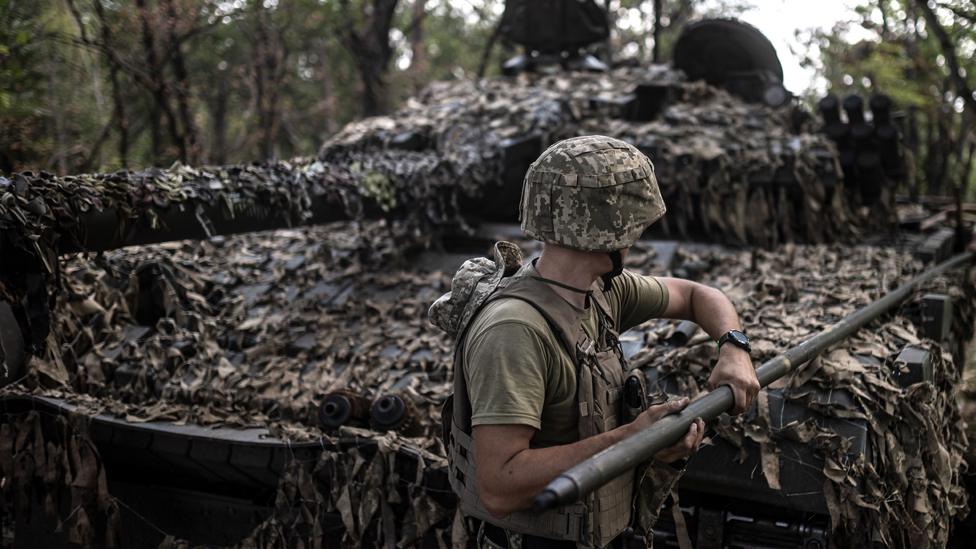
- Published3 July 2023
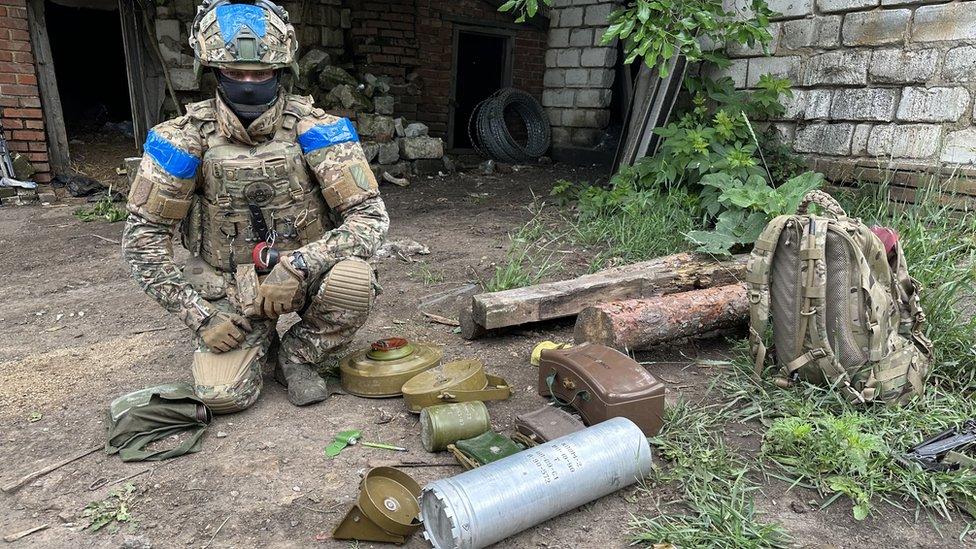
- Published14 April 2023
